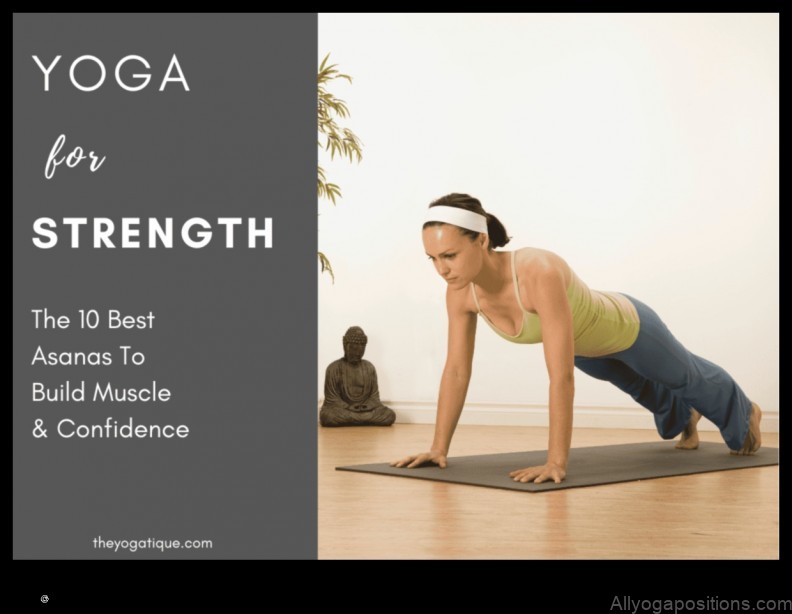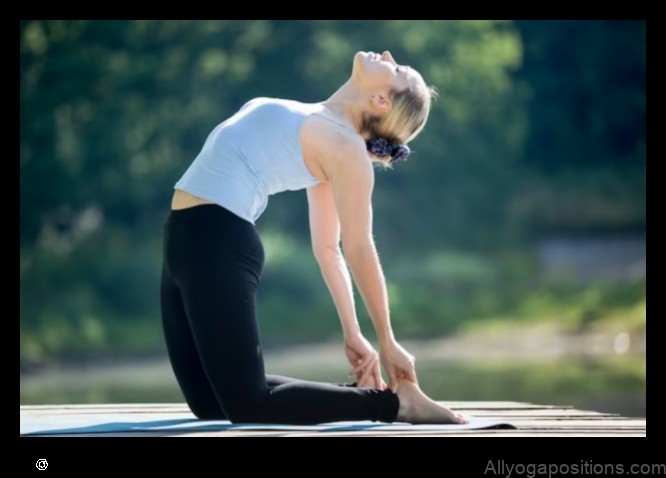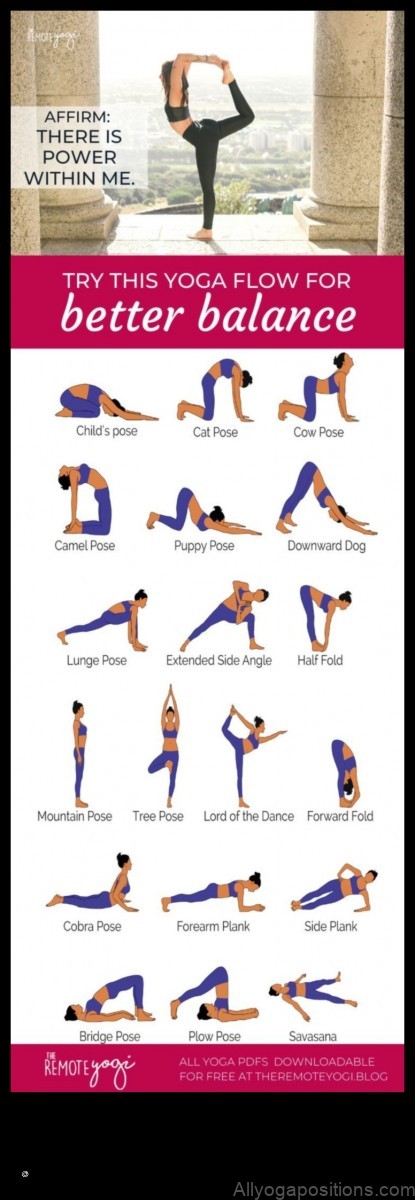
Yoga for Strength: Power Poses
Power yoga is a type of yoga that emphasizes strength, flexibility, and balance. It is a vigorous form of yoga that is designed to challenge the body and mind. Power yoga classes typically involve a series of poses that are held for longer periods of time than in other types of yoga.
Power yoga can help to improve strength, flexibility, and balance. It can also help to reduce stress and anxiety, improve mood, and promote overall well-being.
If you are new to yoga, it is important to start slowly and gradually increase the intensity of your practice as you become more comfortable. Power yoga can be challenging, but it is also a safe and effective way to improve your overall health and well-being.

Benefits of Power Yoga
- Improved strength
- Increased flexibility
- Improved balance
- Reduced stress and anxiety
- Improved mood
- Promoted overall well-being
Contraindications for Power Yoga
- Pregnancy
- Recent surgery
- Injury
- Chronic pain
- High blood pressure
- Heart disease

Different Types of Power Yoga
- Ashtanga yoga
- Vinyasa yoga
- Bikram yoga
- Power yoga fusion
- Power yoga for beginners

How to Do Power Yoga
Power yoga classes typically begin with a warm-up sequence that includes gentle stretching and breathing exercises. The main part of the class consists of a series of poses that are held for longer periods of time than in other types of yoga. The poses are typically performed in a flowing sequence, and the class ends with a cool-down sequence.
Power yoga can be challenging, but it is also a safe and effective way to improve your overall health and well-being. If you are new to yoga, it is important to start slowly and gradually increase the intensity of your practice as you become more comfortable.
Power Yoga Poses for Beginners
- Standing forward bend
- Warrior I pose
- Warrior II pose
- Downward-facing dog pose
- Child’s pose
Power Yoga Poses for Advanced Practitioners
- Handstand
- Headstand
- Plough pose
- Cobra pose
- Wheel pose
Power Yoga for Weight Loss
Power yoga can be a great way to lose weight. It is a calorie-burning exercise that can help you to burn fat and build muscle. However, it is important to note that power yoga is not a magic bullet for weight loss. You will still need to eat a healthy diet and exercise regularly in order to achieve your weight loss goals.
Power Yoga for Stress Relief
Power yoga can be a great way to relieve stress. It is a mind-body practice that can help you to relax and focus. The physical exertion of power yoga can also help to release endorphins, which have mood-boosting effects.
FAQ
- What is the difference between power yoga and other types of yoga?
- Is power yoga safe for beginners?
- What are the benefits of power yoga?
- What are the contraindications for power yoga?
- How do I do power yoga?
| Topic | Answer |
|---|---|
| Yoga | A mind and body practice with a 5,000-year history in ancient Indian philosophy. |
| Strength | The ability to exert force against an external object. |
| Power poses | Physical postures that can increase feelings of power and confidence. |
| Fitness | The state of being physically fit and healthy. |
| Stretch | To extend or expand something, especially a muscle or limb. |
II. Benefits of Power Yoga
Power yoga is a type of yoga that is designed to increase strength, flexibility, and endurance. It is a vigorous form of yoga that incorporates a combination of poses, breathing exercises, and meditation.
There are many benefits to practicing power yoga, including:
- Increased strength
- Increased flexibility
- Improved balance
- Improved coordination
- Reduced stress
- Improved mood
- Increased energy
- Improved sleep
If you are interested in trying power yoga, it is important to start slowly and gradually increase the intensity of your practice as your body adapts. It is also important to listen to your body and stop if you feel pain.
Power yoga can be a great way to improve your overall health and well-being. If you are looking for a challenging and invigorating form of yoga, power yoga is a great option.
III. Contraindications for Power Yoga
Power yoga is a vigorous form of yoga that can be strenuous for some people. It is important to be aware of the contraindications for power yoga before you start practicing it.
The following are some of the contraindications for power yoga:
- High blood pressure
- Heart disease
- Severe back pain
- Pregnancy
- Recent surgery
If you have any of these conditions, you should talk to your doctor before starting power yoga.
Power yoga can be a great way to improve your strength, flexibility, and overall well-being. However, it is important to be aware of the contraindications before you start practicing it.
IV. Different Types of Power Yoga
There are many different types of power yoga, each with its own unique set of benefits. Some of the most popular types of power yoga include:
- Ashtanga yoga
- Vinyasa yoga
- Bikram yoga
- Power yoga fusion
- Yoga sculpt
Each type of power yoga has its own unique set of poses, sequences, and breathing techniques. Some types of power yoga are more challenging than others, so it is important to choose a type that is right for your fitness level and needs.
If you are new to power yoga, it is a good idea to start with a beginner class. This will help you learn the basics of the practice and get you familiar with the different poses and sequences. Once you have mastered the basics, you can move on to a more advanced class.
Power yoga can be a great way to improve your strength, flexibility, and overall well-being. It is a challenging practice, but it is also very rewarding. If you are looking for a way to get in shape and improve your health, power yoga is a great option.
V. How Do I Do Power Yoga?
Power yoga is a type of yoga that combines traditional yoga poses with cardiovascular exercise. It is a challenging form of yoga that can help you build strength, flexibility, and endurance.
To do power yoga, you will need a yoga mat, some comfortable clothing, and a water bottle. You will also need to be able to follow instructions and be comfortable working at your own pace.
A typical power yoga class will begin with a warm-up sequence. This will help to loosen your muscles and prepare you for the more challenging poses. The main part of the class will consist of a series of power yoga poses. These poses are designed to challenge your strength, flexibility, and balance. The class will end with a cool-down sequence. This will help to stretch your muscles and bring your heart rate back to normal.
Power yoga can be a great way to improve your overall health and fitness. It can help you to build strength, flexibility, and endurance. It can also help you to reduce stress and improve your mood.
If you are new to yoga, it is important to start slowly and gradually increase the intensity of your practice. You should also listen to your body and stop if you feel pain.
If you are interested in trying power yoga, there are many resources available to help you get started. You can find classes at your local yoga studio, or you can learn from books, DVDs, or online videos.
VI. Power Yoga Poses for Beginners
Here are some power yoga poses for beginners to try:
- Warrior Pose (Virabhadrasana I)
- Downward-Facing Dog (Adho Mukha Svanasana)
- Upward-Facing Dog (Urdhva Mukha Svanasana)
- Plank Pose (Chaturanga Dandasana)
- Crow Pose (Bakasana)
- Bridge Pose (Setu Bandha Sarvangasana)
- Half Moon Pose (Ardha Chandrasana)
- Standing Forward Fold (Uttanasana)
- Seated Twist (Parivrtta Sukhasana)
These poses are all relatively easy to learn and can be modified to suit your individual fitness level. Be sure to listen to your body and stop if you feel any pain.
VII. Power Yoga Poses for Advanced Practitioners
Power yoga poses for advanced practitioners are designed to challenge your strength, flexibility, and balance. These poses are not for beginners, and you should only attempt them if you have a strong yoga foundation and are in good physical condition.
Some of the most popular power yoga poses for advanced practitioners include:
- The crow pose (bakasana)
- The handstand (pincha mayurasana)
- The headstand (sirshasana)
- The forearm stand (pincha mayurasana)
- The lotus pose (padmasana)
These poses are all challenging, but they are also very rewarding. When you master them, you will feel a sense of accomplishment and pride. However, it is important to approach these poses with caution. Do not attempt them if you are not properly prepared, and always listen to your body. If you experience any pain or discomfort, stop immediately and consult with your doctor.
Power yoga poses for advanced practitioners can be a great way to challenge yourself and improve your overall fitness. However, it is important to remember that these poses are not for everyone. If you are not an advanced practitioner, it is best to avoid them. Instead, focus on poses that are appropriate for your skill level.
Power Yoga for Weight Loss
Power yoga is a type of yoga that is designed to increase strength, flexibility, and cardiovascular fitness. It is a more vigorous form of yoga than traditional hatha yoga, and it incorporates a combination of poses, breathing exercises, and meditation.
Power yoga can be a great way to lose weight because it burns calories and helps to build muscle. A typical power yoga class will last for about an hour, and you can expect to burn between 300 and 500 calories during a single session.
In addition to burning calories, power yoga can also help to tone your muscles and improve your flexibility. This can make you look and feel better, and it can also help you to improve your posture and reduce your risk of injury.
If you are interested in losing weight with power yoga, it is important to start slowly and gradually increase the intensity of your workouts as you get stronger. You should also make sure to eat a healthy diet and get enough rest.
Power yoga can be a great way to lose weight and improve your overall health. If you are looking for a challenging and effective workout, power yoga is a great option for you.
IX. Power Yoga for Stress Relief
Power yoga can be a great way to relieve stress. The physical exertion of the poses can help to release endorphins, which have mood-boosting effects. Additionally, the focus on breathing and meditation can help to calm the mind and body.
If you are looking for a way to relieve stress, power yoga can be a great option. Just be sure to start slowly and gradually increase the intensity of your practice as you become more comfortable.
X. FAQ
Q: What is Power Yoga?
A: Power Yoga is a type of yoga that combines traditional yoga poses with aerobic exercise. It is a vigorous form of yoga that is designed to increase strength, flexibility, and cardiovascular fitness.
Q: What are the benefits of Power Yoga?
A: Power Yoga has many benefits, including:
- Increased strength and flexibility
- Improved cardiovascular fitness
- Reduced stress and anxiety
- Improved sleep
- Increased energy levels
Q: What are the contraindications for Power Yoga?
A: Power Yoga is not recommended for people with the following conditions:
- High blood pressure
- Heart disease
- Pregnancy
- Recent surgery
- Any other medical condition that requires medical clearance
Table of Contents
Maybe You Like Them Too
- Mindfulness Meditation in Yoga A Guide to Stilling the Mind and Finding Inner Peace
- Empowerment Embark Yoga for Courageous Beginnings
- Mindful Meadows Yoga for Grounded MindfulnessA Gentle Practice for Finding Peace and Tranquility in the Modern World
- Meditation and Holistic Health A Guide to a Mindful and Healthy Life
- Yoga for Emotional Balance Find Love and Connection Through Movement
